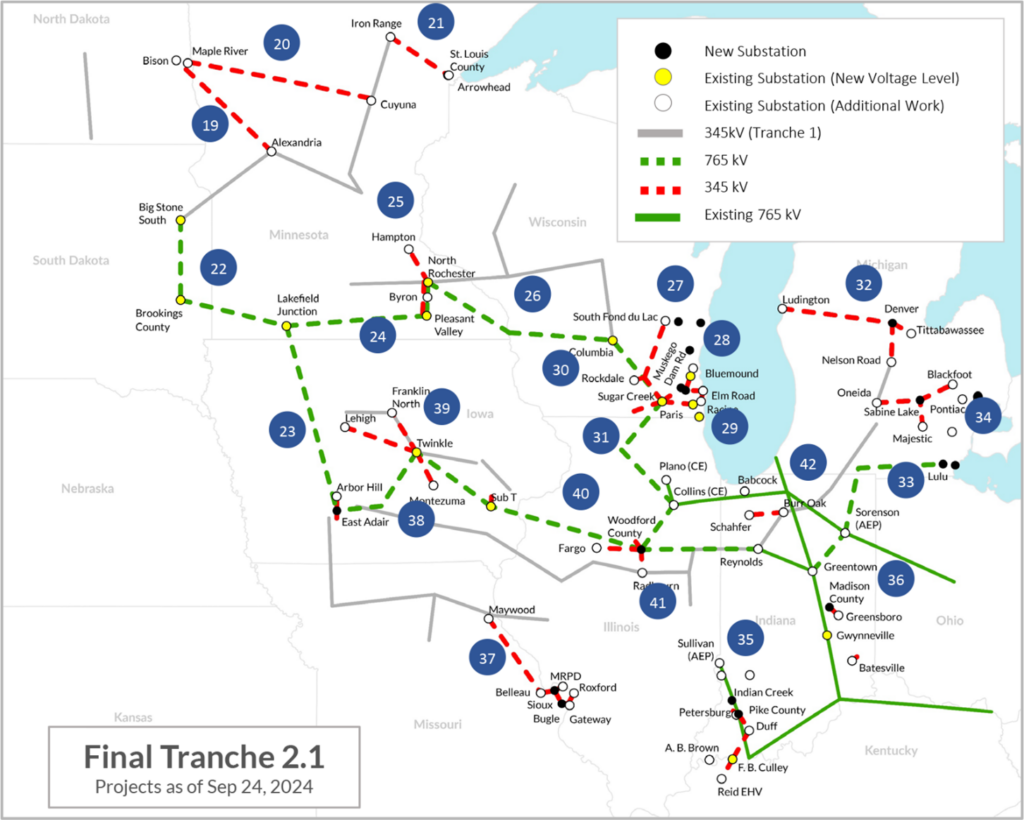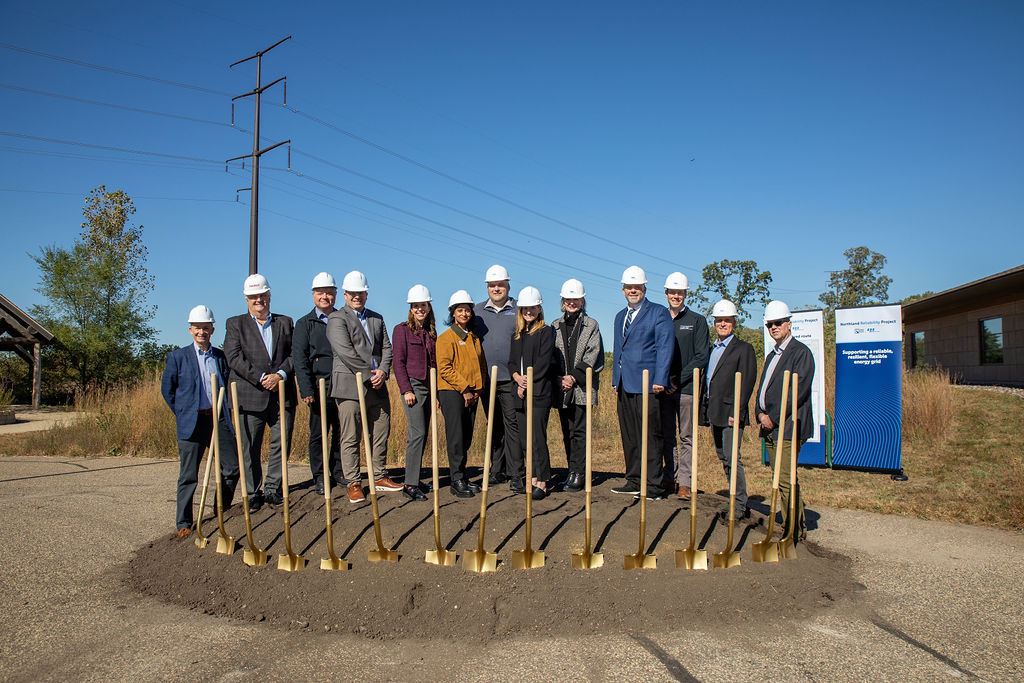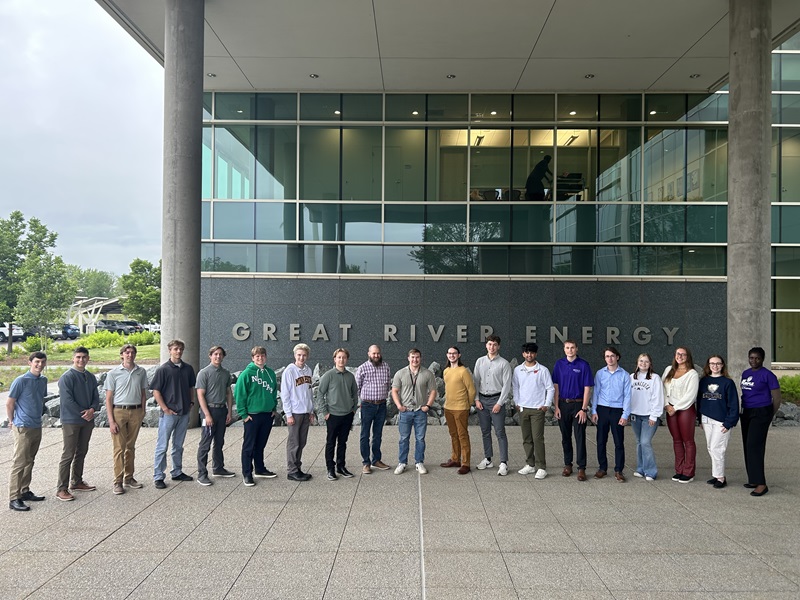Projects that will strengthen electricity reliability and open pathways for renewable energy in the Midwest are poised to take a major step forward this winter.
Great River Energy, wholesale power provider to 27 member-owner distribution cooperatives in Minnesota, has been one of several utilities working with the region’s grid operator, MISO, over the last two years to plan the development of a portfolio of critical high-voltage transmission lines as the region’s grid continues to evolve. MISO is now entering the final stages of their approval process.
According to Great River Energy’s Priti Patel, vice president and chief transmission officer, transmission lines often affect electric cooperative members directly, as they span miles across primarily rural areas.
“We take seriously our responsibility to keep electricity reliable and partner with local communities to best minimize the impacts of necessary infrastructure expansion. We want Minnesotans to know these transmission lines are being planned and will serve a critical function on the electric grid,” Patel said.
As the region’s electric system continues to transition from fossil fuels to renewable resources such as wind and solar, more bulk power lines are needed across the region to ensure continued reliability.
“Being able to transfer bulk power across a multi-state Midwest region is a significant part of the answer to the question ‘what happens when the wind doesn’t blow and the sun doesn’t shine?’,” Patel said. “Ultimately, new transmission lines will help keep electric service reliable and affordable for homes, farms and businesses every hour, every day.”
Transmission congestion has become an increasingly noticeable issue, particularly in western Minnesota, in part due to the construction of new energy generation resources outpacing the construction of new transmission lines. Congestion is driven by a limitation of the electric transmission system preventing the most economic energy generation, often low-cost renewable energy, from being delivered to customers throughout the region. When the transmission system is unable to move electricity efficiently, energy costs rise and impacted counties receive less tax revenues from renewable energy that cannot access the grid. Great River Energy continuously works with MISO to advocate for the projects that are in the best interest of its member cooperatives. MISO’s long-range transmission planning process yielded “Tranche 1”, which was a $10 billion portfolio of 18 high-voltage transmission projects across the region, including four in Minnesota, that was approved in July 2022. Those projects are now in various stages of the regulatory permitting process, with construction on the first projects expected to start in late 2025.
MISO is now expected to approve “Tranche 2.1” as soon as mid-December. This $21.8 billion portfolio includes 24 projects in the region with several 345-kilovolt (kV) transmission lines and a new 765-kV transmission backbone in Minnesota.

Patel compared the changes on the electric grid to the evolution of the nation’s road system.
“The nation’s roadways started out small and simple and then grew more complex with highways and interstate highways as societal needs changed,” Patel said.
In the 2000s, Minnesota utilities worked with area transmission planners and MISO to develop a plan to expand and upgrade the region’s electric grid. Together Minnesota utilities built approximately 800 miles of high-voltage 345-kV transmission lines, creating new pathways for renewable energy and bolstering reliability.
“Fast forward to today where 345-kV transmission lines have become more common. Now we expect even higher voltage lines in Minnesota in the coming years,” Patel said.
MISO’s board of directors is expected to approve the Tranche 2.1 portfolio in December and changes to the plan are still possible, but Great River Energy expects the portfolio to include the development of a new 765-kV backbone in Minnesota.
“One 765-kV transmission line can carry the same amount of electricity as six 345-kV transmission lines. This is a safe, efficient way to bolster the grid and make much better use of land,” Patel said. “This is critical for electric cooperative members because they host more transmission on their property than anyone else.”
If MISO approves Tranche 2.1 in December, it will still be years before the projects are constructed. The Minnesota Public Utilities Commission ultimately decides on the need and final route for any of the projects in Minnesota.
“We will work closely with communities, cooperative members, the Commission, legislators and other advocates to make sure there is ample opportunity for the public and property owners to weigh in during the routing process and have their voices heard for any projects we develop,” Patel said.
For more information about MISO’s long range transmission planning process and Tranche 2.1, visit misoenergy.org. Click on “Planning” and then “Long Range Transmission Planning.”
 " data-object-fit="cover">
" data-object-fit="cover">
 " data-object-fit="cover">
" data-object-fit="cover">